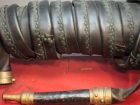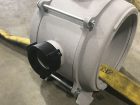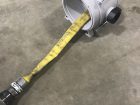
Features
Truck Tech: Fire hose history, care and best maintenance protocols
July 15, 2019
By Chris Dennis
The summer is well under way. The best time to enjoy the great outdoors, except for the bugs. Heck, it’s better than snow, I say.
My last article was about apparatus decontamination practices from the crews riding the truck every day to the technicians that perform repairs on the truck.
Fire hose is the backbone to what you do to get “wet stuff on the hot stuff,” as was once said. Fire hose replaced the bucket brigade. It was first invented in Holland in 1673. It was a 50-foot-long length made of leather or sail cloth. These pieces were sewn together and subsequently very heavy. A couple of brass threaded type fittings were attached to either end to couple the hose together.
The leather hose that was stitched was done along the same lines as tannery saddles and rigging for horseback riding. The problem was it leaked, as the seams could not be tight. More water was lost when put under pressure. The seams would also burst when applied weight was added to the hose. The leather, over time, would also crack and dry out then shrink.
This problem was manageable with hose care and maintenance even back in 1673. The design and concept were used for well over 100 years.
Then, in the early 1800s, a pair of firefighters in Philadelphia put their experience and knowledge to work to make this hose better. Still using leather, they were able to attach the two seams together with stitching and an added feature – copper rivets. They later stopped even stitching the hose as the rivets worked well. It would allow for higher pressures and better flow rates.
The pressures recorded were approximately 200-pounds-per-square-inch in the day. This creative invention almost made the hose leakproof. The rivets also now gave the seam area a lot more strength but increased a 50-foot-length to 85 pounds.
When I got schooled on this bit of history I was told that it was at this time when relay pumping was developed. Firefighters were able to move water between storage or pumping stations hundreds of feet apart – the new and improved bucket brigade. This hose, as well, required a lot of maintenance before it was put away for the next big one.
We move forward to 1821 when Mr. James Boyd was able to patent a rubber-lined hose. The outer jackets where made of spun cotton instead of leather. This would make the hose a lot lighter and easier to store and manage.
It was Charles Goodyear, yes of Goodyear rubber company, that discovered vulcanization and applied it to the rubber jacket fire hose. He even added cotton fibers to the rubber to reinforce it. The outer cotton jackets would act like a sponge, soaking up water and contaminates from the fire.
When the event was over, the wet, dirty hose would be rolled up, folded or stacked till needed again.
It was at this time, again, the level of maintenance had to be stepped up. The hose had to be dried before being put away. It also had to be washed. The mold that would build up on the wet hose, as well as the biproducts of fire on the hose, were not in the best interests of the hose. Things like smell and looks was just part of the business then.
The hose would degrade and fall apart quickly. It had to be cleaned and dried prior to using again. Trees made great hose towers. As well, a gentle snake weave with the hose on its side in the sunshine dried cotton out. These practices are still in use today. Fire stations with hose towers, hose drying racks and the snake weave still work today.
Hose testing was done at this time and proven when the hose blew apart.
Many years have passed since then. Technology has evolved in everything, including fire hose.
Hose outer jackets are made of many different substances – polyester, woven yarn, filament yarn, rubber-in-rubber extrusions to synthetic materials, and recycled. Whatever it’s made of, hose manufacturers are selling a mold-resistant, not mold-free product. They will all prove to you that their product is best-suited for your job requirements. They all have to meet NFPA 1961 (standard on fire hose) if your department works to a suggested standard.
NFPA 1962 is the standard for the care and use, inspection, service-testing and replacement of fire hose, couplings, nozzles and fire-hose appliances.
The hose today requires washing. Decontamination of absolutely every piece of equipment that is used at a fire event requires cleaning. Whatever cleaning agents you are using be sure it meets the manufacturers recommendations for products so as not to ruin the hose.
Depending on your hose of choice, it’s not advisable to pack it away wet. The products, as mentioned earlier, in some cases can be packed away wet and it will not affect the hose product. However, mold will still grow.
There are many ways to wash fire hose.
A pressure washer can be used. Caution must be taken if using this as a means of washing hose. High-pressure washers can damage the weave, as well as pushing it apart if held too close to the weave. Dedicated fire-hose wash brushes and buckets with a garden hose will work perfectly.
As a MacGyver-type person myself, I always see ways to save money. This includes homemade hose washers. However, as a firefighting professional it’s not my suggestion to do so. Engineered hose washers are available from many different manufacturers.
You are setting yourself up for failure nowadays with occupational health and safety concerns if you use anything homemade. If it fails and injures someone, that amazing gesture of saving the department money by making one just cost the department a whole lot more if someone is hurt.
Depending on hose lay on the rig, your hose may be open to the elements. If so, a cover is best practice. Hard or soft covers will keep the ultraviolet rays and elements off the hose.
In Ontario as well as other provinces, we use a de-icing agent on the roads. Because this is in a liquid state it virtually atomizes and floats in the air and sticks to the hose.
If the hose exterior is anything other than rubber, I recommend it be taken off once a year in the spring for cleaning.
If the hose loads have been off entirely throughout the year and cleaned, then no need. If your department does not run many fire calls in a year, or runs a magnitude of calls, it needs to be hose-tested annually.
I recommend you check NFPA 1961 Chapter 2-1 hose requirements. This will help direct and guide you on what the requirements are and what a fire department is required to do under the guidelines.
Again, these are only guidelines. Each department should have testing procedures as well as documentation that the hose was tested to specifications. It may even be possible that the underwriter for your particular area requires a document that proves the hose is tested to assist with insurance reductions for your area of fire protection.
Nozzles, as well as all other hose appliances, require cleaning as well. Mild soap and water work perfect for nozzles. Be sure you have the correct lubrication fluids for the appliances you have washed – swivel couplings, fog and straight-stream nozzles, and the bails on these nozzles.
Whatever it may be, do not use a lubricant or spray that will attract dirt and allow it to stick.
A wet-applied agenda that dries is best suited such as a dry-spray, silicone-based product, for example.
Good old-fashioned soap makes for a great lubrication tool as it will wash away all dirt when water is applied. Just remember to re-lube again with the same.
Have a safe, warm, wonderful summer.
Be safe my friends
Chris Dennis is the chief mechanical officer for Vaughan Fire & Rescue Service in Ontario. He can be reached at Chris.Dennis@vaughan.ca.
Print this page



